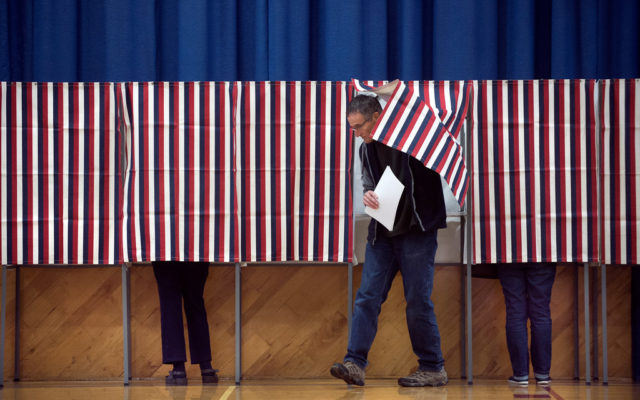
A guide to the voter ID and red flag referendums on the Maine ballot
By Billy Kobin, Bangor Daily News Staff
Mainers have two statewide referendums before them on the November ballot that would enshrine voter ID requirements and make big changes to absentee voting along with creating a “red flag” law.
The policy proposals in the referendums have previously cropped up during debates among state lawmakers and Gov. Janet Mills but will now see voters settle them on Election Day. Turnout is expected to be lower during an off-year election, something that is already affecting the campaigns around both questions.
Here’s a rundown of the two referendums ahead of the Nov. 4 election.
Question 1: Voter ID and absentee voting limits
“Do you want to change Maine election laws to eliminate two days of absentee voting, prohibit requests for absentee ballots by phone or family members, end ongoing absentee voter status for seniors and people with disabilities, ban prepaid postage on absentee ballot return envelopes, limit the number of drop boxes, require voters to show certain photo ID before voting, and make other changes to our elections?”
The voter ID referendum was pushed by The Dinner Table, a political committee fronted by Rep. Laurel Libby, R-Auburn, and it would have Maine join 36 states that either require or request voters show a form of identification at the polls.
While a 2023 poll found 63% of Mainers support requiring identification when voting, including about a third of Democratic respondents, the referendum’s prospects look cloudier due to the absentee voting limits also included in the proposal. Maine’s no-excuse early voting rules have helped the state lead or nearly lead the nation in voter turnout.
If voters approve the referendum, phone applications for absentee ballots would be banned. Two absentee voting days on the Wednesday and Thursday before the election would get eliminated. Older Mainers and those with disabilities would no longer automatically receive absentee ballots and would have to submit separate requests for each election. Portland and Orono could no longer have more than one absentee ballot drop box. Clerks would have to assemble bipartisan teams to empty out drop boxes, something they now can handle themselves.
Proponents of the referendum have said it would increase “security and trust” in Maine elections. They also note the initiative would require the state to issue free ID cards to voters without a driver’s license and allows voters without an ID to complete a ballot and present a photo ID within four days.
Opponents have pointed to studies repeatedly finding extremely low rates of voter fraud, and they have argued the changes would hurt vulnerable Mainers who cannot easily make it to the polls on Election Day.
Question 2: Red flag law
“Do you want to allow courts to temporarily prohibit a person from having dangerous weapons if law enforcement, family, or household members show that the person poses a significant danger of causing physical injury to themselves or others?”
If Maine voters approve Question 2, the state will join 21 states and the District of Columbia in having a red flag law. A coalition of groups, including the Maine Gun Safety Coalition, are behind the “red flag” law referendum that followed debates in the Legislature over whether to tweak the state’s existing “yellow flag” law after the 2023 mass shooting in Lewiston.
Mills, a Democrat, and her administration, including the Maine State Police, oppose the law. The campaign against it is being led by the gun-rights Sportsman’s Alliance of Maine. It and the governor helped craft the 2019 yellow flag law that makes Maine unique among states by requiring law enforcement to take a person deemed dangerous into protective custody before they receive a mental health evaluation and then face a judge who can temporarily take away their weapons.
A red flag law would skip a step by allowing family members to directly petition courts for help if they fear their loved ones pose a danger to themselves or others. In the months before the Lewiston rampage, police had gone to the gunman’s Bowdoin home to try to contact him after his family and military peers had warned of his threats and declining mental health.
Mills pointed out in August that the yellow flag law has been used more than 1,000 times, with its use surging after an Army reservist killed 18 people and injured 13 in Lewiston during the state’s deadliest-ever mass shooting.
Law enforcement officers knocked on Robert Card II’s door during those welfare checks, but he did not answer. The state commission that Mills tasked with investigating the Lewiston shooting found the Sagadahoc County Sheriff’s Office had sufficient probable cause to take Card’s guns away and that deputies should have used the yellow flag law.
Proponents have pointed to that to argue the existing process was confusing or too cumbersome for officers in that situation, and they have noted the new statute would exist alongside the yellow flag law. Opponents of Question 2 have said the Lewiston case was an example of human error rather than an example of a flawed statute.